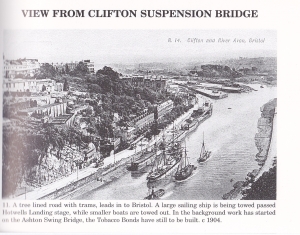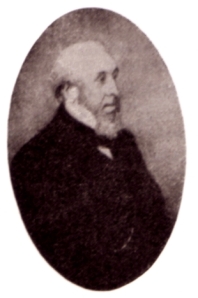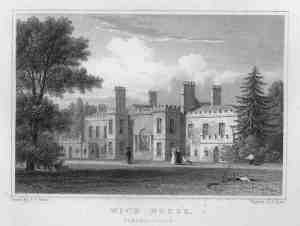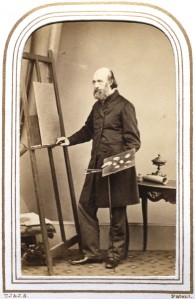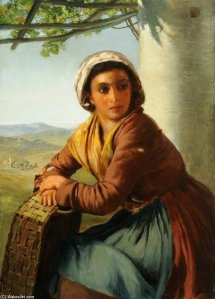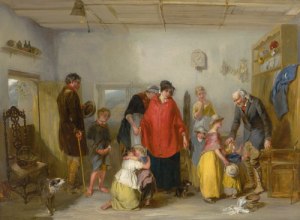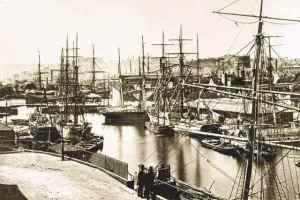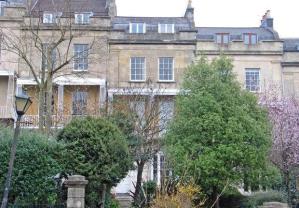Father
Paternal:
The Poole family is an old family well established in Bristol with influence in the growing city. Mary Faulkner Poole who married James Steel was the daughter of James Paul Poole. James was born in 1774 and married Ruth Latimer in 1774, they had seven children. He was a successful grocer and coal merchant, living on the Hotwell Road. His wife Ruth died in 1832. A newspaper article wrote that she died at home (Elm Cottage) from an inflammation of the bowels after 5 days of suffering. (Perhaps a ruptured appendix). A newspaper notice wrote, “She left a disconsolate husband and 9 children. She was a most affectionate and exemplary mother. She showed a pious and holy resignation to the divine will in the solemn hour of death”.
James marries again to Mary Dyke, they continue to live in Elm Cottage. After James Steel dies in 1840 Mary Steel and her 2 daughters go to stay with her father and step mother for while. He dies aged 83, he is generous in his will, leaving 100 pound to his granddaughters Mary and Ruth Steel. Ruth also gets his piano which she used to play.
Two of his sons are also very successful in life. His son James takes over the family business and built it up to new heights.
James becomes very wealthy and influential in Bristol. He is the director of 3 railway companies; chairman of the Bristol Docks committee; president of The Grateful Society; a magistrate and mayor of Bristol in 1858. His home Wick House is a grand mansion, now a nursing home. When he dies in 1872 he leaves 60,000 pound in his will.
Paul Falconer Poole becomes a famous English artist; his biography is in The Oxford Dictionary of National Biography and Wikipedia. He is largely a self taught artist, he developed an interest in art at an early age going to local art galleries and exhibitions in Bristol. When his father sends him to Italy on a business trip he also takes the opportunity to visit all the important galleries in Rome, Milan, Florence and Naples as well as the Louvre. On his return to England he moves to London where he can continue his painting.
Though self-taught his fine feeling for colour, poetic sympathy and dramatic power gained for him a high position among British artists. He exhibited his first work in the Royal Academy at the age of twenty-five, the subject being The Well, a scene in Naples. In 1843 his position was made secure by his Solomon Eagle, for which he received from the Fine Art Commissioners a prize of £300 sterling. After his exhibition of the Surrender of Syon House he was elected an associate of the Royal Academy in 1846, and was made an academician in 1861.
He must have some part in influencing his niece Ruth Elizabeth Steel in becoming an artist herself. In fact she includes his name in a reference in a Victorian newspaper for Ballarat Grammar school.
He was described as “shy, sensitive, nervous, full of large conceptions, with a pathetic sadness in his manner…. Possessed of a strong individuality, a man of peculiar powers of mind and vivid conceptions, a man with a strain of savage in his blood and a good hater”. Physically he was tall, elegantly built, unassuming and without pretension. Photos of him illustrate this description very well.
His paintings are hung in many galleries including the Tate, Royal Academy, Bristol City Museum, V and A Museum, Walker Art Gallery, Liverpool and Manchester City Galleries.
The Emigrant’s Departure is held in National Gallery of Victoria, Australia.
When he dies in 1879 he leaves money to his nieces Mary and Ruth, he is buried at Highgate Cemetery in London.
Mary Faulkner Poole grew up in a relatively wealthy family, her father James was a grocer and coal merchant; she had 4 brothers and 2 sisters. She is 27 when her mother Ruth dies. As her father and brother James have their business in the Bristol docks area and are both members of The Society of Merchant Venturers it is probable that this is where she meets James Steel who also works in this area and is a member of the same society.
When Mary is 29 she and James marry, he is much older at 48. In 6 years she has 4 children and when her youngest is only one, James dies. Some months previously he had made out his will, she gets “plate, linen, china, furniture and effects”, but no money. It must have been a strange situation for her; still young with 4 children she had little choice in life but to remain single. If she remarried she would lose everything.
She stays in the family home for a while but how did she manage financially? When her youngest daughter Fanny dies, aged 8 it must have been unbearable for her. She takes her other 2 daughters Ruth and Mary and goes to stay with her father and step mother at Elm Cottage.
By 1861, aged 56 and her children now adults she is living at 51 Grove Place, Clifton with son James and daughter Mary. When James and Ruth go to Australia she lives with daughter Mary who is a teacher. Mary dies in 1868, aged 63.

